
SU president engages media on university developments

Silliman University (SU) President Dr. Betty Cernol McCann highlighted key developments at the university during a media conference titled “Inside Silliman: Conversations with Dr. Betty Cernol McCann” on July 28, 2025, at the Silliman Assembly Hall.
Organized by the Office of Media and Public Affairs (OMPA), the event gathered Dumaguete-based media practitioners for a candid dialogue with McCann on the university’s direction, responses to sectoral issues, and future plans.
“The global educational landscape has changed in the past five to seven years because of the advent of digital technology,” McCann said, emphasizing the digital transformation occurring across SU. She cited the transformation of the Robert B. and Metta J. Silliman Library as an example of how SU has integrated technology in learning and resource delivery.
She also discussed shifts in educational delivery modes, highlighting the adoption of both synchronous and asynchronous learning. These innovations, she explained, are part of the broader “trifocalization” of Philippine education, which now underscores basic education, higher education, and lifelong learning.
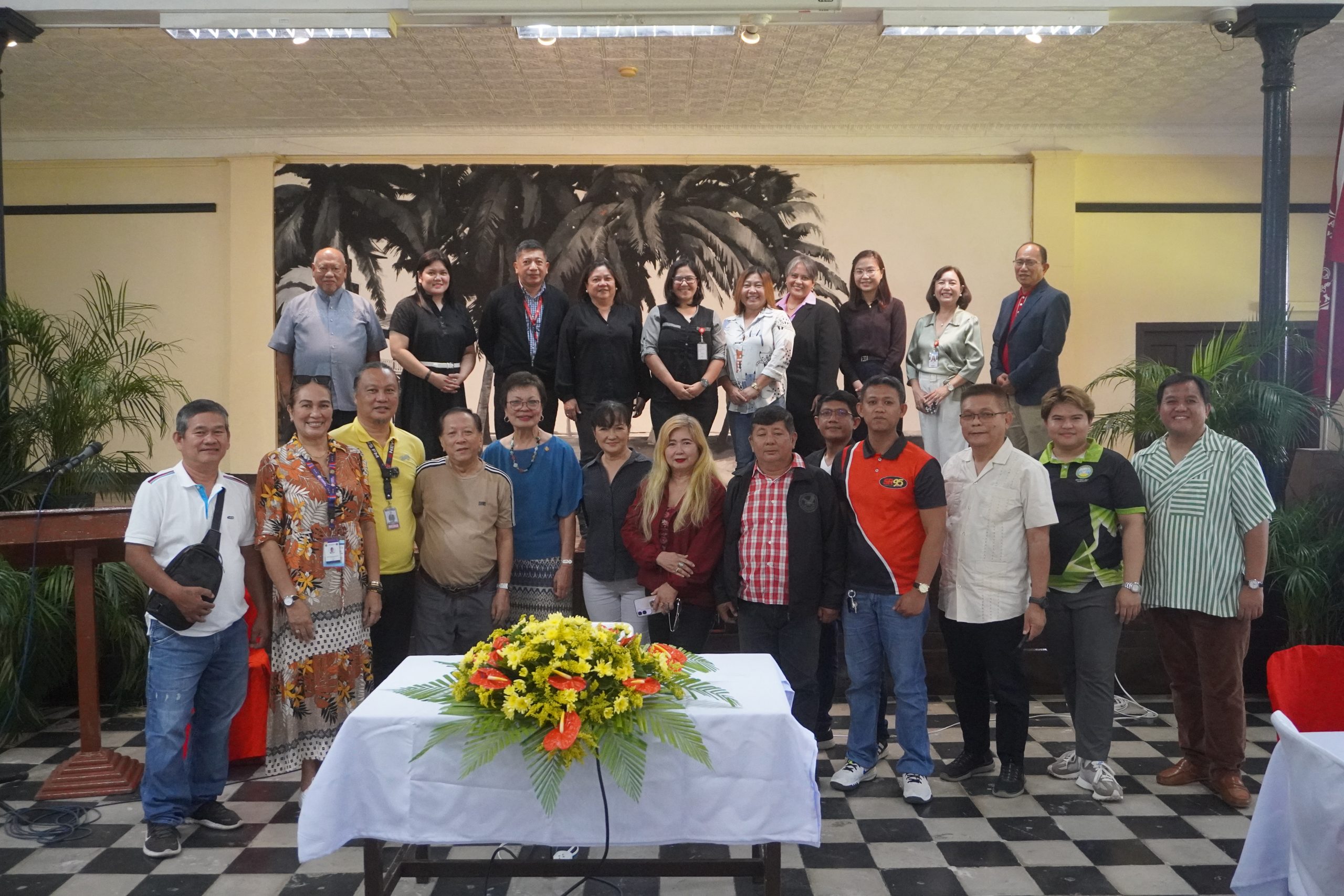
Members of the local media pose with SU administrators after the event.
“In line with this, we are moving toward micro-credentialing,” she said, citing SU’s close partnership with TESDA. As an example, she explained how Agriculture students can enroll in TESDA-certified skills training through SU’s TEVEC program, earning practical certifications such as in butchery alongside their degree.
Media Engagement and Press Questions
Negros Chronicles’ Ely Dejaresco opened the floor by commenting on how media relations have changed in the digital age. He recalled a time when university presidents were easily accessible by phone.
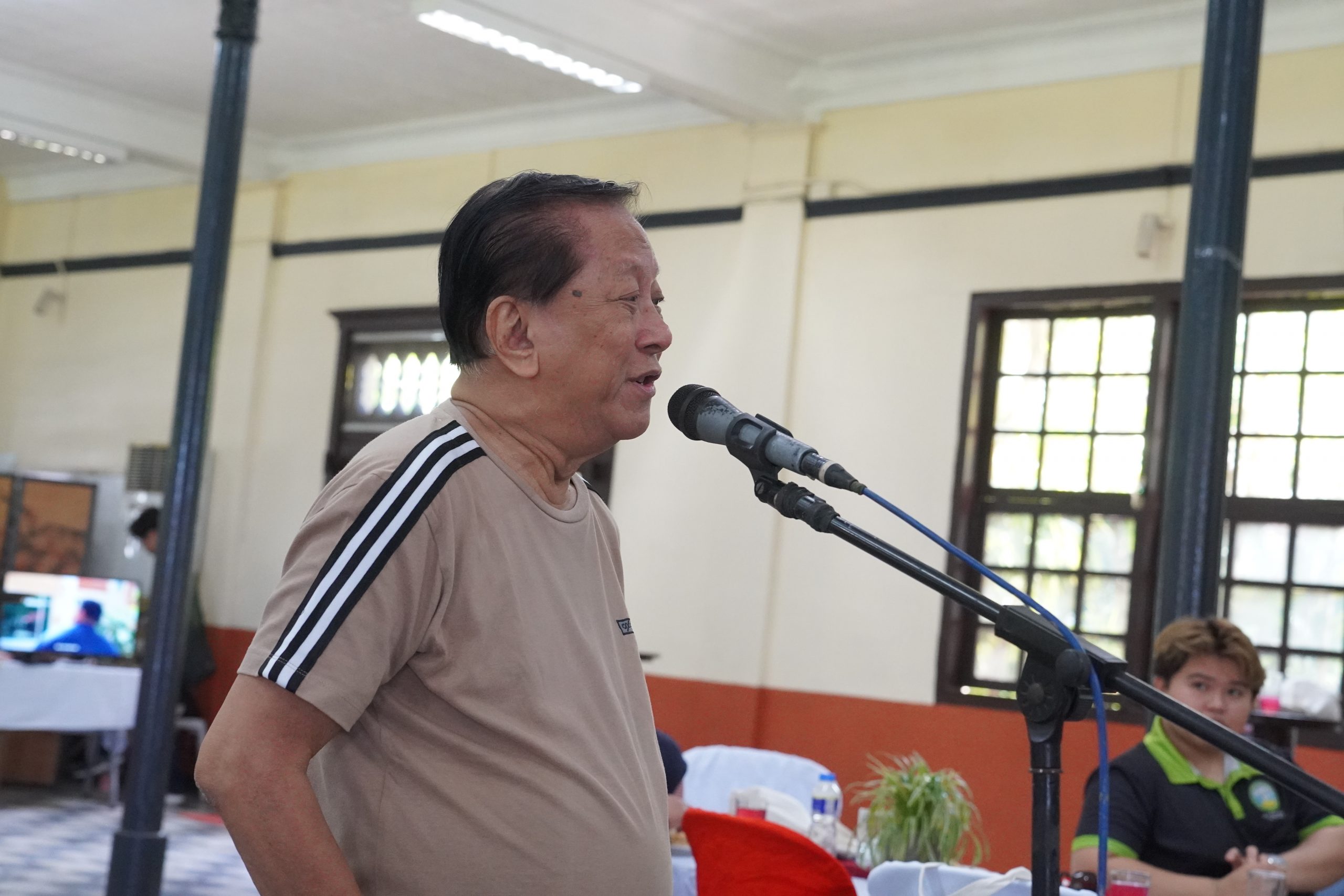
Negros Chronicles’ Ely Dejaresco raises a question during the Q&A with McCann.
McCann acknowledged the shift in context, saying that while things have moved online, OMPA remains the key channel for press inquiries. “Our chief, Dr. Warly Caturay, may not have all the answers, but he will direct questions to the appropriate units. He’s a traffic manager, in a way,” she explained.
DYWC’s Melanie Lim asked whether SU’s 5Cs—Church, Classroom, Cultural Space, Court, and Community—are still central amid technological changes. McCann affirmed their continuing relevance: “The Vision, Mission, and Goals of Silliman remain, but the delivery, in terms of strategies, may have changed because of the demands of the time.” She pointed to the Silliman Church’s use of online platforms and digital innovations in cultural productions, athletics, and outreach as examples of technology supporting the 5Cs.
Roy August Bustillo of K5 News raised the issue of faculty retention in light of transfers to government institutions. McCann said such moves are usually motivated by immediate financial incentives or better retirement packages. She added that SU offers early retirement after 20 years of service, allowing some to transition to public teaching posts. Still, many faculty members stay due to SU’s attractive fringe benefits, including substantial tuition discounts for their dependents.
In relation to faculty retention, Alex Pal of Metropost brought up the professorial chair initiative, referencing the past donations made by the Silliman University Alumni Council of North America (SUACONA).
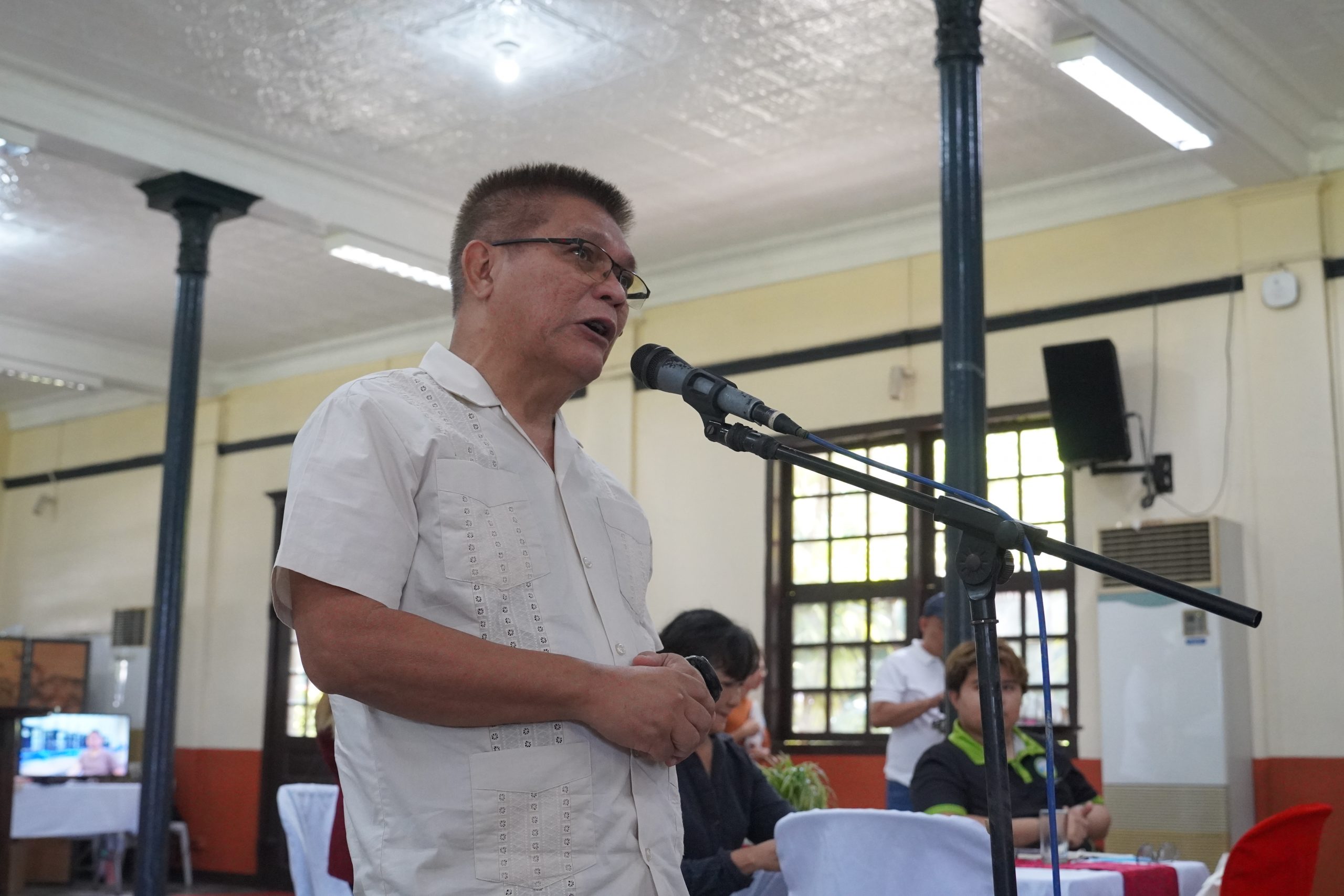
Alex Pal of MetroPost asks McCann a question during the Q&A.
McCann expressed her appreciation for SUACONA’s generous support, acknowledging that such contributions had allowed the university to invite outside experts to join the faculty. She added, “The thing about a professorial chair is that it’s a one-time event.” She emphasized that a more sustainable approach lies in investing in the university’s faculty development program by supporting faculty members in pursuing advanced degrees and long-term professional growth.
DYRM’s Sherlyn Abella inquired about statements made by the Silliman University Faculty Association (SUFA) regarding delays in the signing of the Supplemental Collective Bargaining Agreement (SCBA). McCann explained that the SCBA was officially signed on July 14 under the facilitation of the Department of Labor and Employment. She noted that clarifications during negotiations are part of the standard process, and that any previously resolved concerns raised again had already been addressed by the Secretary of Labor. “They signed, so it’s okay now,” she concluded.
Judy Flores-Partlow of the Philippine News Agency asked about the status of Silliman University’s clean and green campus initiative and its use of sustainable energy.
McCann shared that the university is now powered by 100% renewable energy, allowing it to earn sustainability credits.
When Flores-Partlow followed up with a question about the university’s carbon footprint, McCann acknowledged that this remains a critical area under the Sustainable Development Goals (SDGs) that SU is actively working to address. She noted that in a recent conversation with Dr. Robert Guino-o II, SU’s Executive Director for Research, Publication, and Innovations, they discussed the need for the university to begin publicly reporting on its progress in meeting various SDG targets, including its carbon footprint.
Other matters discussed during the open forum included the university’s initiatives to spread the Gospel to students, the request for media upskilling programs, and updates on upcoming Founders Day celebrations.
Among the media attendees were Michael Ramo (Energy FM), James Carl Jaramillo (DYYD), Roy Ortega (DYRL 90.5), Pastor Michael Faborada (DYSR), Neil Rio (DYGB), Jessie Lagahit (Radio Sincero), Arnel Bantog (DYRM), and Marc Guarino (NORECO II).
Several university administrators were also present: Rev. Jonathan Pia, SU Church Senior Minister; Dr. Margaret Helen U. Alvarez, vice president for Academic Affairs and Research; Dr. Guino-o, RPI executive director; Atty. Chielo Ybio, Legal Counsel chief; Dr. Lourdes Angela Piñero, OD-HRM chief; Dr. Chuchi Montenegro, Information and Communication Technology chief; Engr. Debonaire Mamhot, Facilities Management and Administrative Services chief; Glynnis Jean Casiño, Strategic Partnerships officer-in-charge; Carmyl Lee Ramos, University Accountant; Yolanda Maxino, Admissions officer; and Asst. Prof. Janice Antoniette Forster, Sinergy tBI manager.
Tour of Key Learning Facilities
Before the dialogue, media guests toured two major learning facilities: the Dr. Mariano C. Lao Global Studies Center (GSC) and the transformed SU Library.
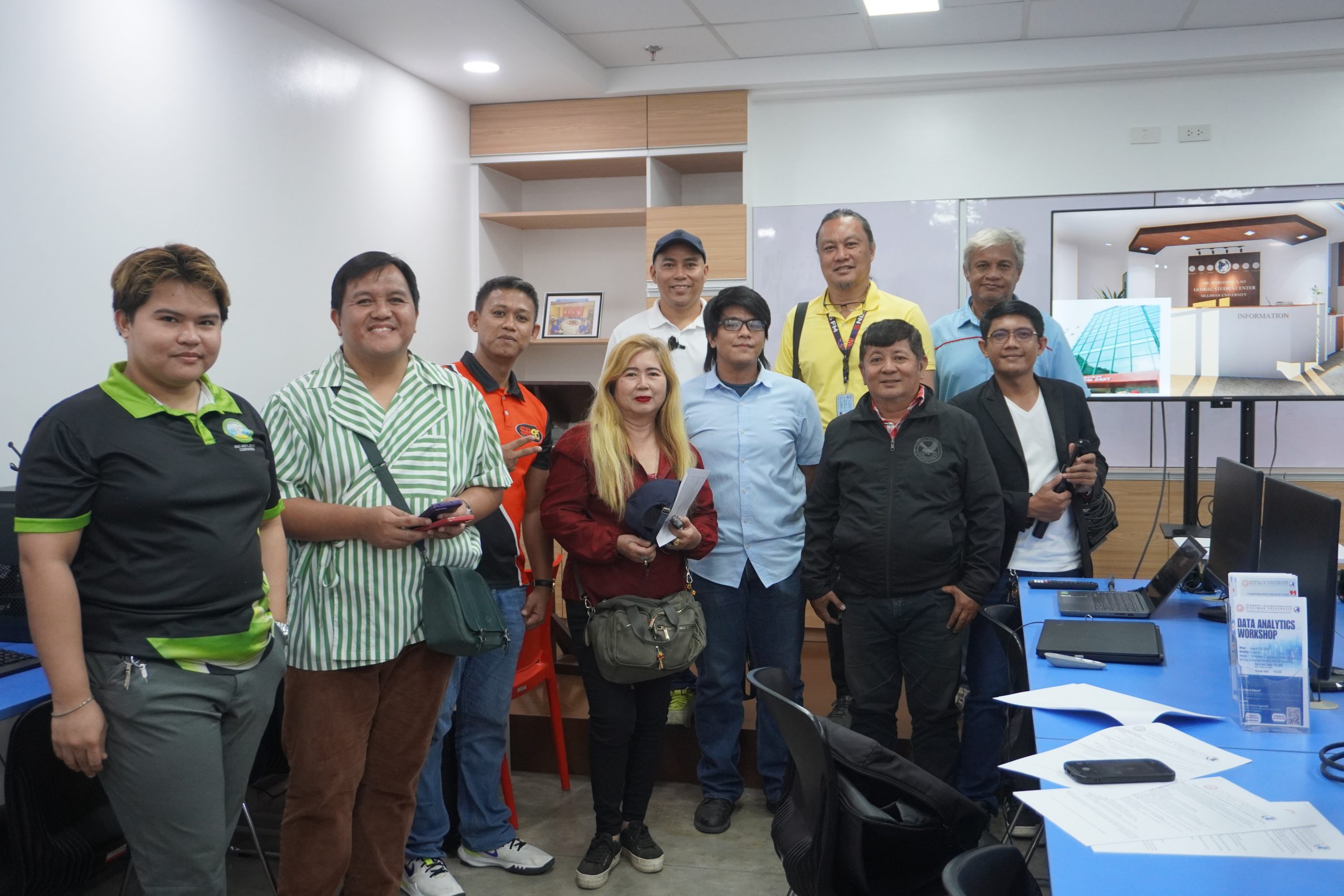
chief (second-left), and Russel Rhay Basiao, Continuing Education and Professional Advancement Unit manager (front, third-right) at the Dr. Mariano C. Lao Global Studies Center.
At the GSC, Russel Rhay Basiao introduced the Center’s three main units: the Continuing Education and Professional Advancement Unit, which offers flexible, non-degree programs for lifelong learning; the Silliman Online University Learning (SOUL) Unit, which supports online and hybrid learning and manages the university’s learning management system; and the Innovation, Creation, Invention, and Outreach Unit, which focuses on digital literacy, research, and community outreach through free computer education, lab access, and educational tech initiatives.
The press learned that the GSC has also developed a course specifically designed to help journalists ethically and effectively use artificial intelligence.
At the library, University Librarian Asst. Prof. Sarah Angiela Ragay oriented the group on the library’s upgraded facilities and new features, reinforcing SU’s commitment to innovative, student-centered learning environments.
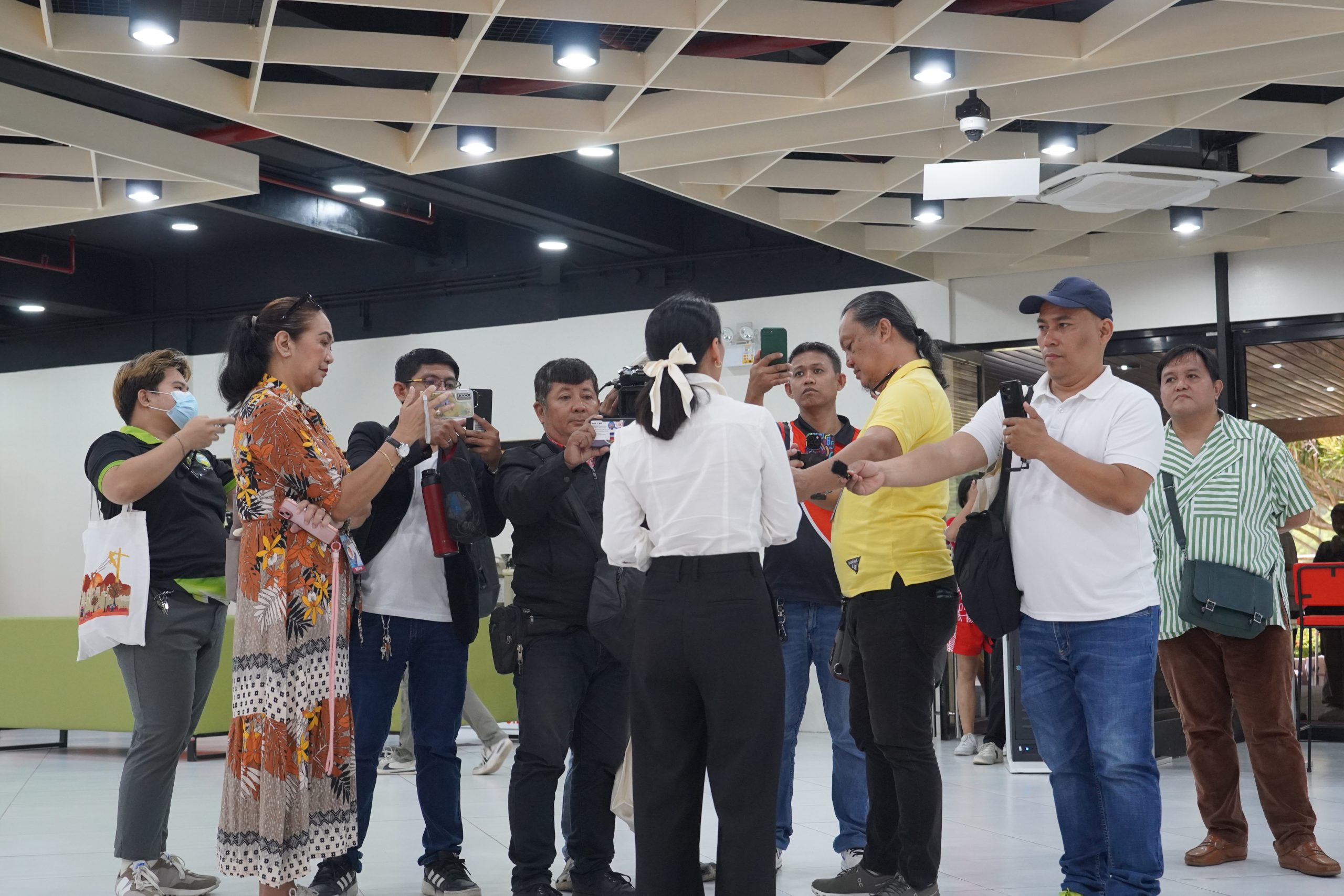
Asst. Prof. Sarah Angiela Ragay, SU librarian, answers questions from the press.
Future Media Events
The conversation forms part of the university’s ongoing effort to keep the media informed and engaged in its developments. The OMPA will continue to hold periodic forums to ensure sustained public awareness and involvement.



